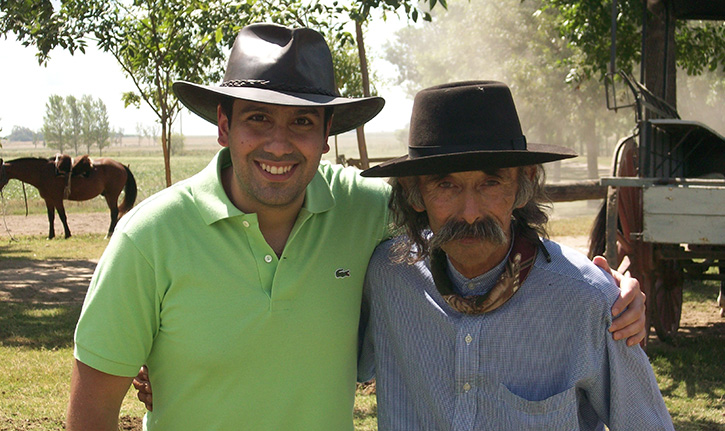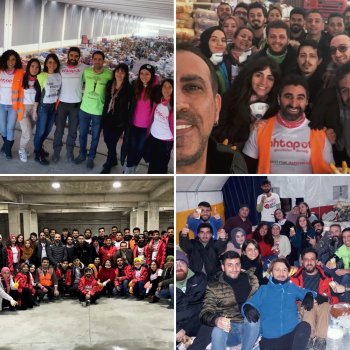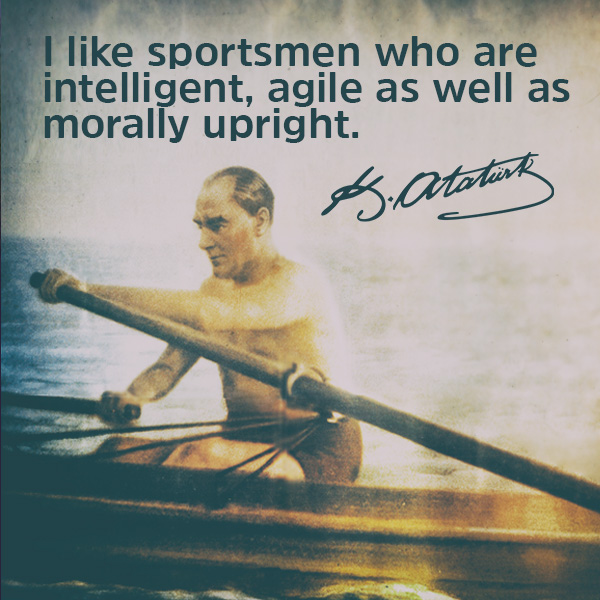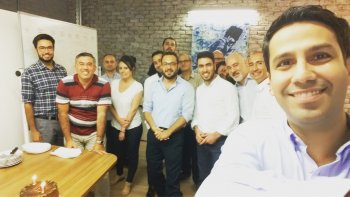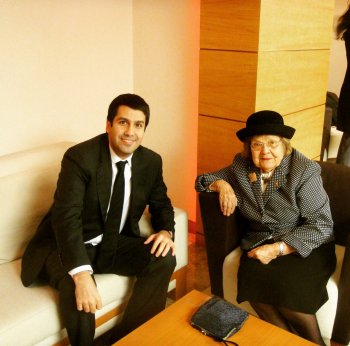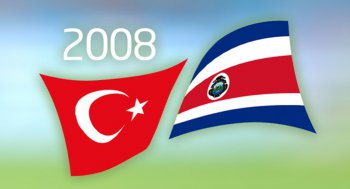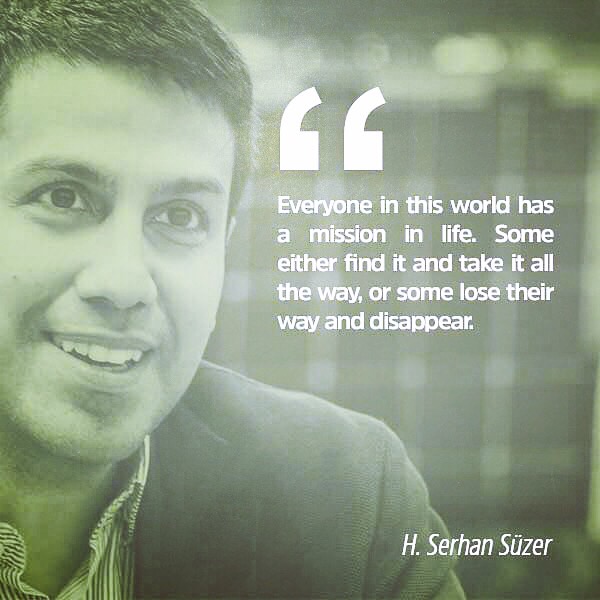The Magical World of Tango Dancers: Argentina (Buenos Aires)
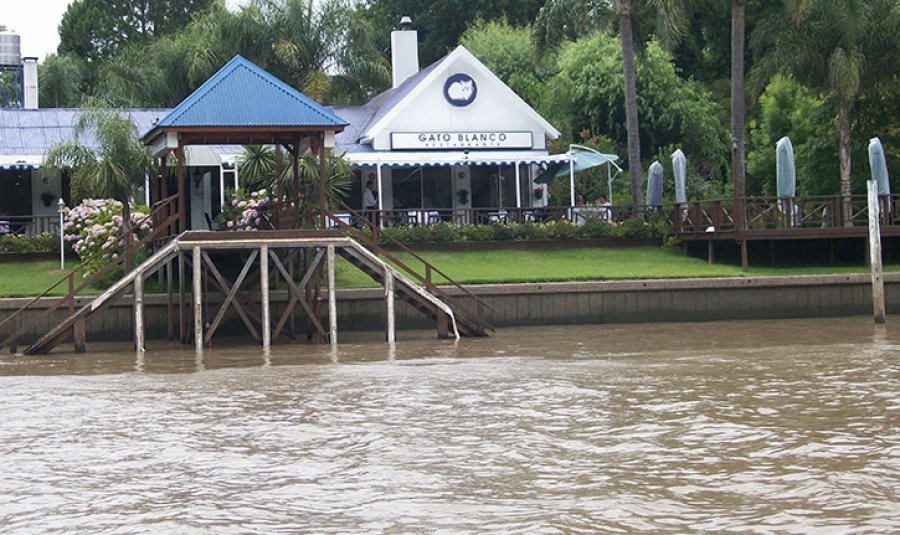
We arrived at Buenos Aires, which is named as the Paris of Latin America, on a sunny and wonderful day. After we settled to our hotel, we went to the concierge to make a three day program for Buenos Aires.
When we were done planning at the concierge, we decided to go outside and explore what was around. Our hotel was in Recoleta, one of the most upper-crust neighborhoods of Buenos Aires. We found ourselves in Havanna, which was close to the hotel. Havanna is the most well-known ‘dulce de leche’ brand of Argentina. Dulce de leche means ‘milk dessert’ in Spanish. You can think of it as caramel. Its difference from caramel is that instead of sugar, it’s made of milk. It’s incredibly delicious. It’s sold in jars like Nutella and it’s very tasty. You can see me drinking coffee at one shop of Havanna, who went into the retail sector. I remember buying dulce de leche in seven different jars and finishing all of them within a month after I came back to Turkey. Even mentioning dulce de leche here makes me want it.

After this break, we went to Patio Bullrich, which is a shopping mall in a stone building at a walking distance from our hotel. The most beautiful examples of shopping malls are present in Turkey; however I can say that the Argentineans have created an exemplary boutique shopping mall with its interior and exterior architecture and with its brand mix in a historical building. After quickly walking inside Patio Bullrich, we went outside and continued walking towards the places near the sea in Recoleta. The mechanical flower structure in a park area, which you can see in the picture below, caught our attention while we were walking. According to what we’ve been told, this mechanical flower works with solar energy and it regularly closes and opens. We didn’t get to see it closing and opening while we were there but I should say that it intrigued me very much (I tried to examine and understand how it works, but I couldn’t get the information I wanted, because there wasn’t anyone around to technically explain this structure to me).
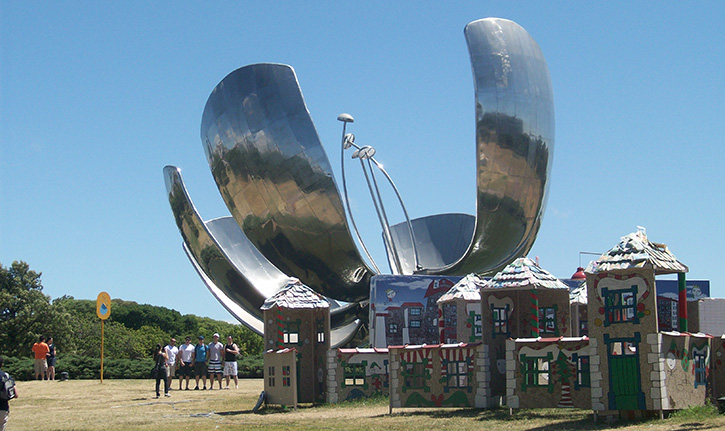
After walking through several parks, we started walking back to our hotel. On the way back, we discovered Calle Junin, which is similar to our İstiklal Street, but it’s smaller. After walking on this street, we went back to the Grand Hyatt Hotel located in the Duhau Palace.
I started my professional business career in the tourism sector and as my first job, I opened The Ritz-Carlton Hotel in Istanbul and I worked for this sector for long years. This is why I’m very picky about hotels. I especially picked the Grand Hyatt Hotel in Buenos Aires and understood once again that I’ve made the right decision. The hotel is a stone building which was an old palace and the inside is decorated very elegantly, as it should be. In fact, there is almost an art gallery in the corridors that connect the two buildings of the hotel. The paintings on the wall suit the palace well. However, the thing I’m more interested than the outer shell of the hotel is the management logic and system that gives the hotel its spirit. In this sense, the high standards of the hotel surprised me a lot, in a good way.
One morning during breakfast, I was talking about how the Grand Hyatt Hotel in Buenos Aires was managed with the same managing logic of a Ritz-Carlton Hotel when I saw a tall man around his 40s who was suited up, who acted as the manager and talked to the personnel of the restaurant and the customers around. I called for the waiter and asked: “Is that man the General Manager of the hotel?” When he said yes, I told him that I wanted to talk to him as a customer and invited him over to our table. The waiter delivered my message and the General Manager came over two minutes later. I congratulated him about the service quality and told him that the management was truly praiseworthy. Then, I introduced myself and told him that he was managing this hotel with the standards of Ritz-Carlton. When I said this, he smiled and told me that he was transferred from the Ritz-Carlton chain to the Hyatt chain a couple of years ago. We chatted for a while about the sector and the Ritz-Carlton chain and found out mutual acquaintances from the sector. After this pleasant chat, we ended our breakfast and started our three day Buenos Aires program.
On the first day, we visited important places of the city. Our first stop was La Boca. This neighborhood that is located at the Rio de la Plata end of the Riachuelo River is famous for colorful houses, cafes, restaurants and artworks. Paintings and sculptures of most artists are found on the pavements of El Caminito Alley and on the balconies of the houses.
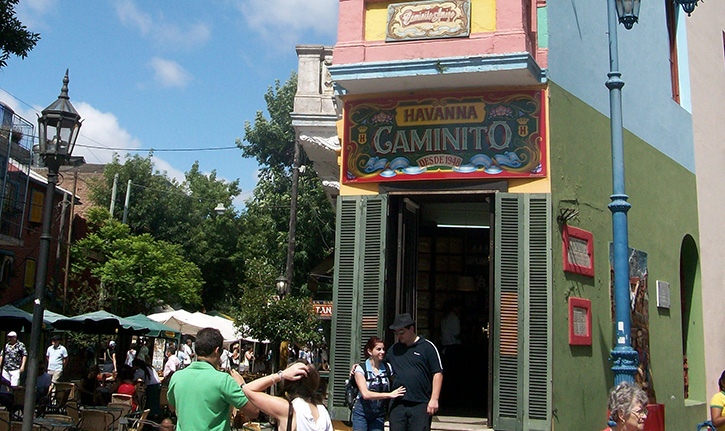
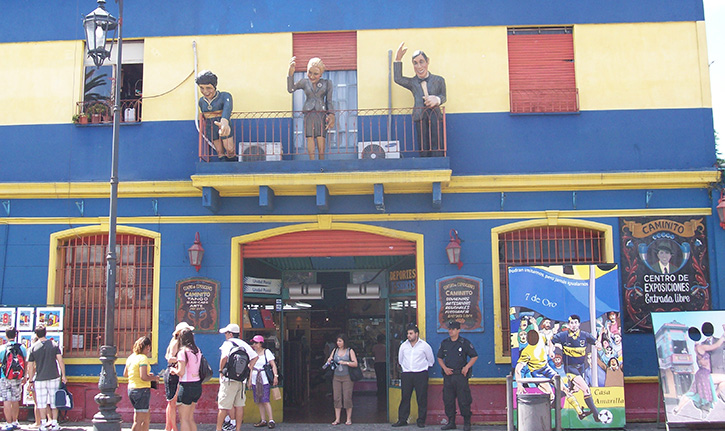
In this wonderful atmosphere, you can feel the reflections of the tango culture in the music played on the streets, in the dances in cafes and from the Argentineans dressed as tango dancers to take pictures with the tourists.
La Boca is also famous with the soccer stadium La Bombonera of the soccer club Boca Juniors. I can say that the competition between the two most important teams of Argentina, Boca Juniors and River Plate, is like the competition between Galatasaray and Fenerbahçe in Turkey and life almost stops in the country when there is a derby match between these two teams. In fact, just like the Fenerbahçe fans did to McDonalds, the Boca Juniors fans changed the colors of Coca Cola, the sponsor of the stadium, from red and white to black and white. You can see the stadium below in the picture that I took from outside.
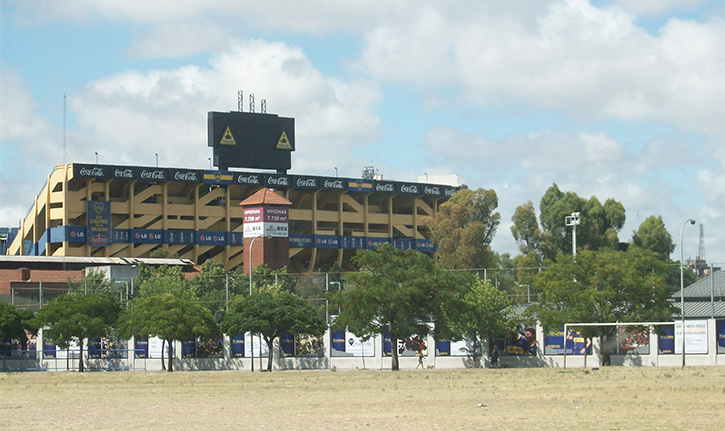
While our tour guide was telling us that the La Boca neighborhood was founded by the Italian migrants and that he himself had Italian-origin, I thought of the Argentineans we met during our trip. I can say that all the Argentineans I met during this trip were very sympathetic and friendly in a Mediterranean fashion. 87% of the population of about 40 million consider themselves Europe originated. We can say that most of this Europe-originated population came from Italy back in the day. Frankly speaking, considering my Latin America experiences, I only saw people that talk Spanish with an Italian accent only in Argentina. When I first heard it, it sounded interesting to me.
After spending a good time in La Boca, we went to the famous cemetery in Recoleta. This cemetery, where Eva Peron is also buried in, is not an ordinary place. All tombs are built almost like monuments. There are both family graveyards and mausoleums here. By the way, let me make a quick explanation to those who don’t know who Eva Peron is. Maria Eva Duarte Peron (May 7, 1919-July 26, 1952) is the second wife of Juan Domingo Peron, Argentina’s President. Eva Peron, whom the people of Argentina liked a lot, worked for women’s rights during her husband’s dictatorship and although she wasn’t active in politics, she was always one with politics and the people. She had an important role in the organization of labor unions and she managed to give the right to vote to women in 1947. She provided the poor with food, money and medicine and organized aid campaigns for children. Eva Peron died at the age of 33, in July 26, 1952, because of cancer. We can say that she became a world-wide phenomenon thanks to Madonna. The song “Don’t Cry for Me Argentina” from the movie in which Madonna played Eva Peron was the number one hit for a long time.
Don’t ask me what tourists are doing in a cemetery, because this place has become one of the touristic attractions of Buenos Aires. In the city tours, they set a place for this cemetery in Recoleta. Frankly speaking, I was also surprised to see such a place after seeing architectures of several other cemeteries. Below, you will see the picture of me at the entrance of this cemetery that has a magnificent architecture and the epitaph of Eva Peron.
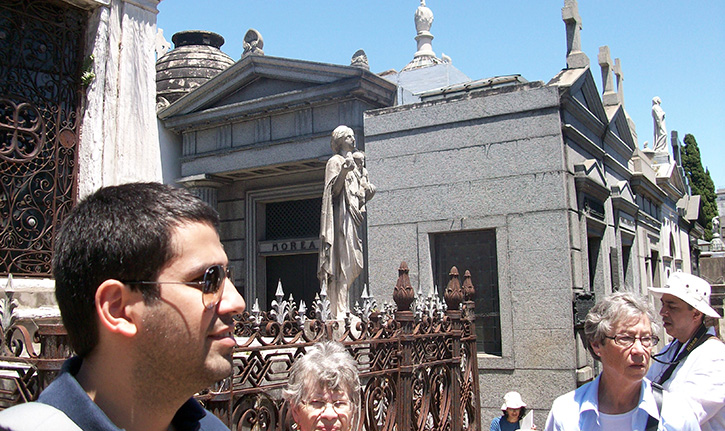
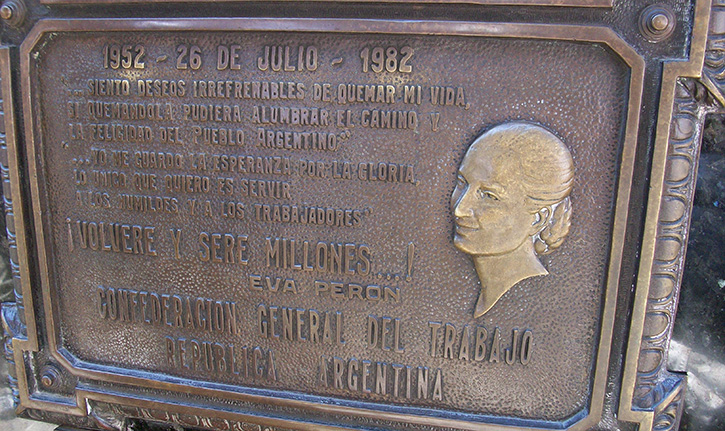
After visiting the cemetery; we went to Plaza de Mayo, where the government buildings are, Casa Rosada, where the Presidential Palace is, and the Metropolitan Cathedral.
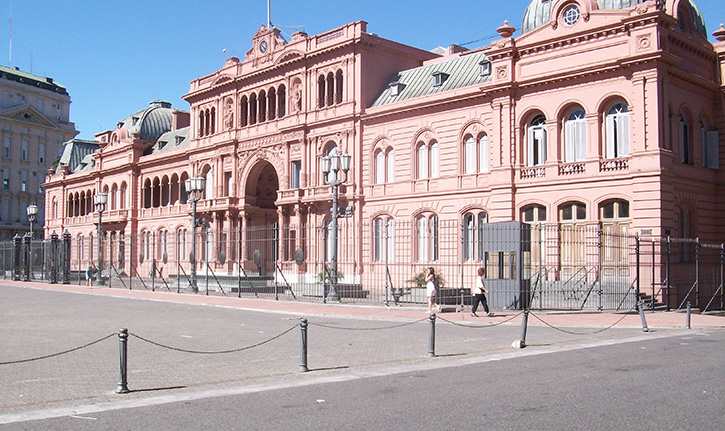
Casa Rosada
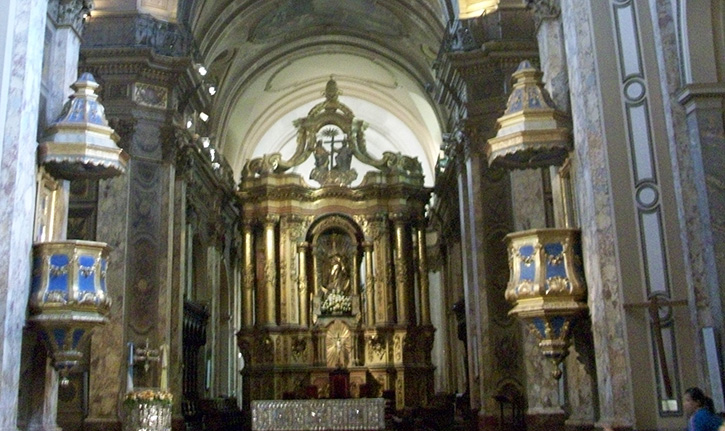
Inside of the Metropolitan Cathedral
This was enough for the last day of the year. I remember eating along with live music at a fine Argentinean restaurant to celebrate New Year at the end of a busy day. With the humoristic service of the waiters, with customers singing and dancing, we welcomed New Year cheerfully.
When the Paris-Dakar rally moved to Argentina and Chili, this race, which takes place on the first day of the year, starts in a festive air. The next day, we walked to the place where the race would start. Then, we saw those people who challenged the desert conditions and we saw all sorts of vehicles.
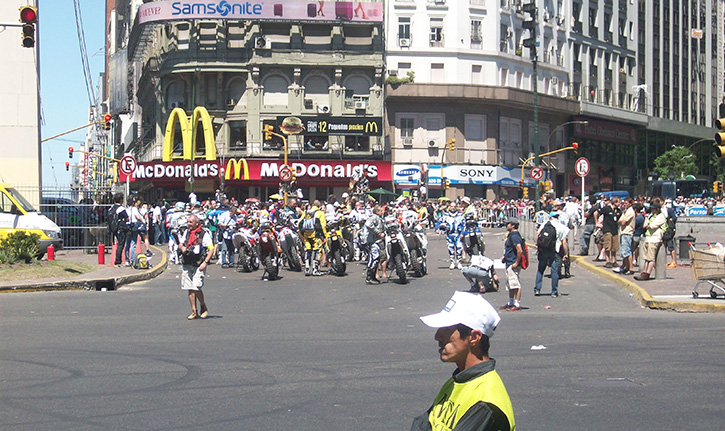
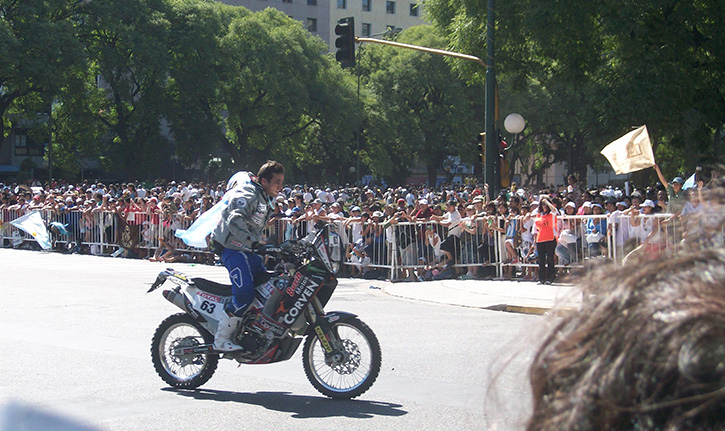
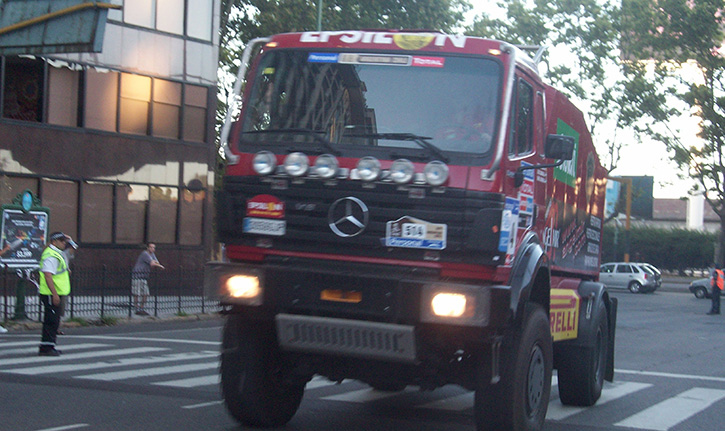
After this magnificent march past whose pictures you can see above, we went to another important neighborhood of the city, San Telmo. After shopping at the bazaar that made up San Telmo, drinking coffee and listening to music, we returned to our hotel. At night, we went to the wonderful tango show which I had been waiting for a long time. While having dinner, you are watching a magnificent tango show at Esquina Carlos Gardel. I saw good tango dancers in Turkey, but I can say that I have never seen such tango dancing that I saw here. Our eyes almost couldn’t catch the speed of the dancers, we couldn’t follow their footsteps.
In this incredible show, the magnificent dance of a couple in their 80s received the biggest applause. At the end of the show, everyone stood up and applauded this couple. Dancing is such a thing. Universal… You can do it at every age as much as your physique let’s you and you can enjoy it and have fun with it. What affected everyone the most in this show was that a couple, no matter their age, could passionately perform the dance and enjoy it to the full extent. May God grant such joy of living to everyone like this couple!
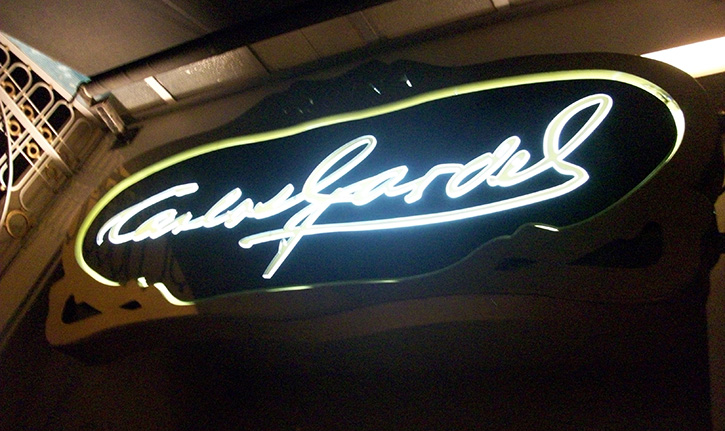
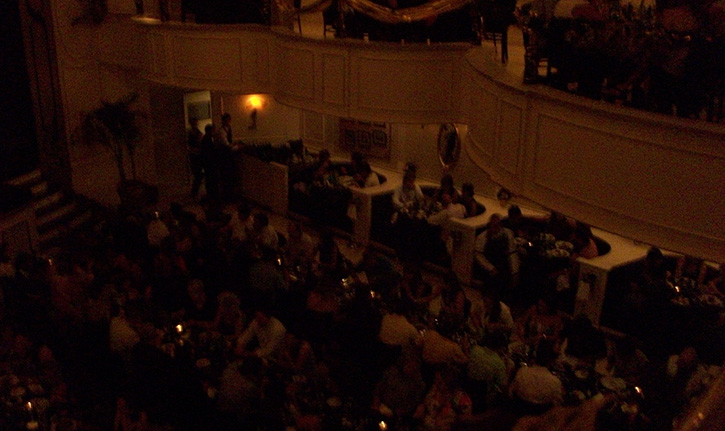
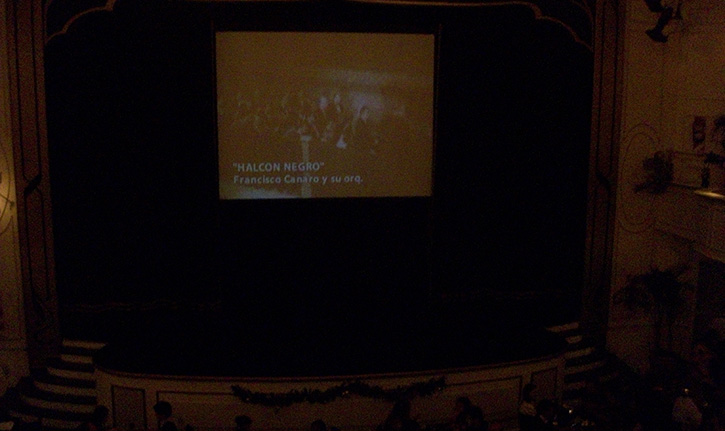
The next day, we experienced one of the most special days of our trip. That day, we visited a ranch at the Estancia neighborhood that’s located a little outside the city. Within the scope of our city tour, this visit started with a magnificent show after a short introduction. Below, you can find the pictures from the beginning of the show that the Gauchos (the Argentinean cowboys) performed.
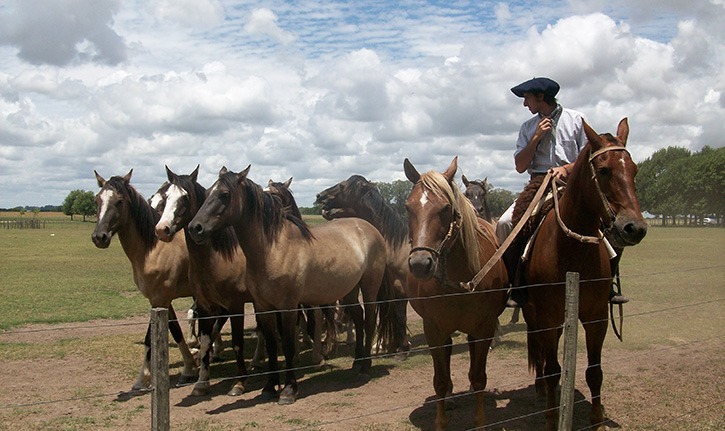
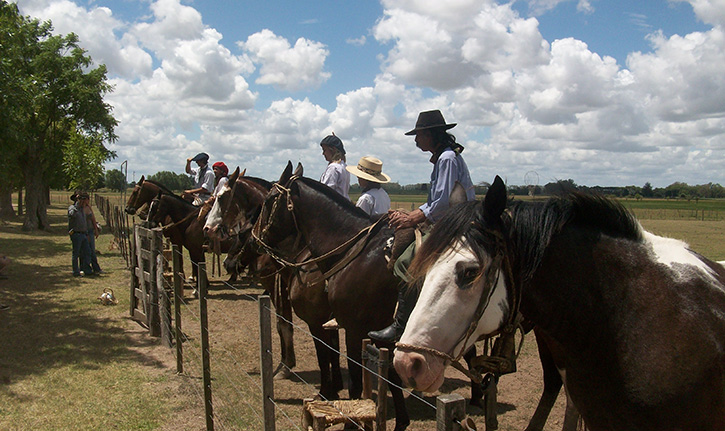
The show began with the game “pato.” Pato is like playing basketball while riding on a horse. The word pato means duck in Spanish and when people started playing this game in the 17th century, they used ducks instead of balls. Later on, this game was banned because of the fights that people had and the violence that was used on the ducks. In 1930s, the owner of the ranch, Alberto del Castillo Pose, reset the rules of the game and the ball that you can see in the picture below took the place of ducks.
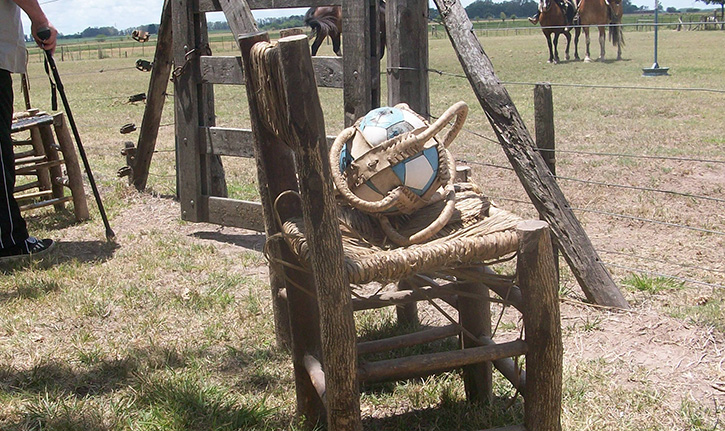
In 1953, when the President Juan Peron announced pato as the “national game,” pato gained legitimacy. Below, you can find the video of the pato match played at the ranch that we visited.
https://www.youtube.com/watch?v=edS4C3zRFkM
The next show was also very interesting. It was a game about picking up a little hook hanging from a stick while riding at full gallop. You can watch the video below to better understand what I mean.
https://www.youtube.com/watch?v=cQZ0LXQ9IHk
Finally, there was a game about getting the chair on horseback. While watching the video below, watch the person who’s ringing the bell carefully.
https://www.youtube.com/watch?v=_sRz2UZW8rA
After all these activities, we went to eat, which everyone in the ranch waited for in excitement. The reason is that Argentina is famous with its meat culture. The quality of the meat and the meat culture in Argentina is world-famous. To explain it better, I shall say that the owner of Nusr-et restaurant in Turkey, which is very famous nowadays, stayed in Argentina for a long time, had an education here and went back to Turkey to open Turkey’s best quality and most popular meat restaurant. Argentina is a place like this. Personally, I don’t eat meat a lot, but the taste of the meat we ate here was incredible. We enjoyed our lunch while our Gaucho, Juan Carlos, who is like the mascot of the ranch, played the guitar. Here are some pictures from the lunch:
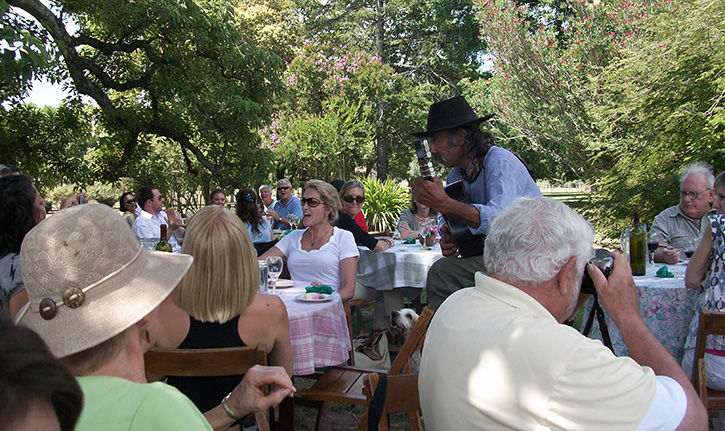
Juan Carlos and I
On our last day, we went to El Tigre, another neighborhood found at the north of Buenos Aires. The most important feature of El Tigre is that it lies on the Parana Delta. Think of districts formed on little rivers connected to each other. You have to use boats to get to the houses. People living here provide their goods by floating groceries. This place is almost like a little Venice.

Transportation on the Parana Delta is done by boats like this
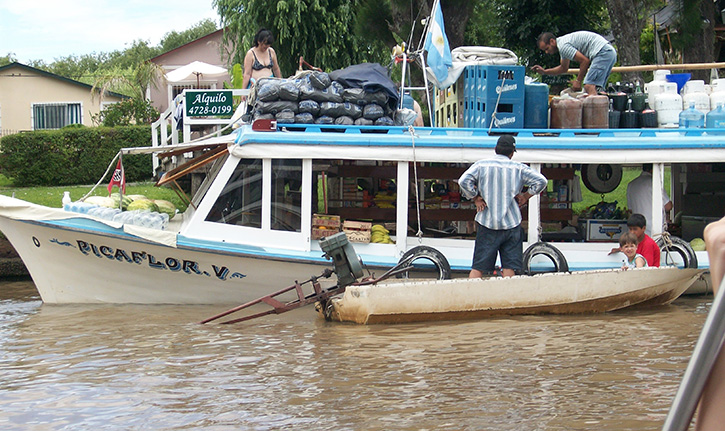
Here’s a “floating grocery”
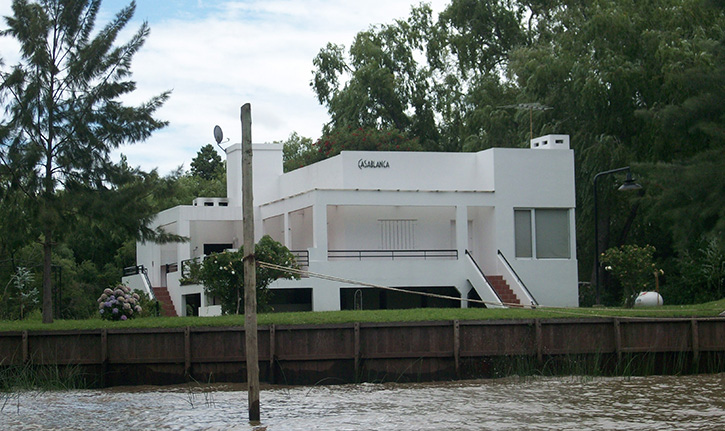
A detached house located by the river
After touring the river, we went to Gato Blanco (White Cat), which was also by the river, to have lunch. This time, we had fish on the menu. After the lunch, we started going back. On our way back, we saw buildings like Art Museums by the river.

The Art Museum owned by the Municipality is a magnificent building
We had our last dinner in Argentina in Palermo. I remember eating a delicious pizza at this beautiful neighborhood which resembled Soho of New York.
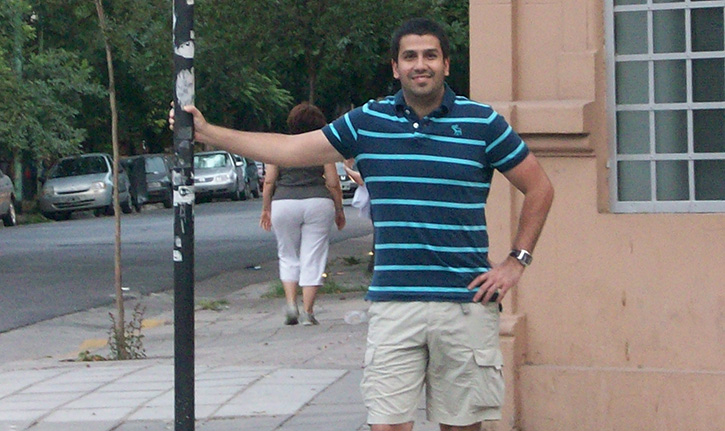
On the Costa Rica street of Palermo
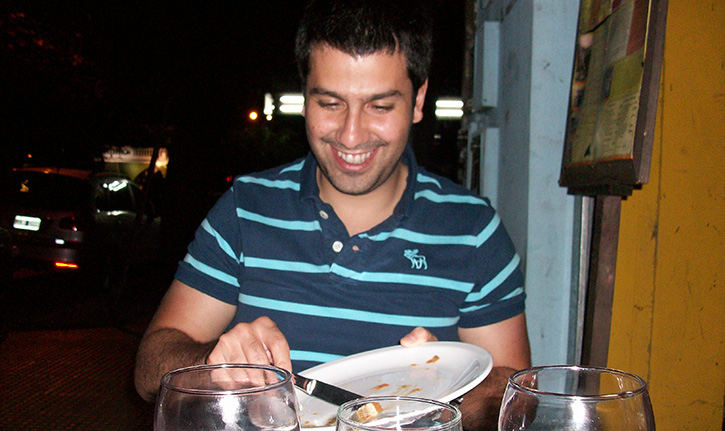
A scene from the last dinner
With all these great memories, we turned back to our country over Brazil. I’ve been telling my friends about my Argentina memories for two years. I’m happy to finally share them with you. If you get the chance and have time for it, I definitely advise you to visit Argentina.
Tag: gezi

